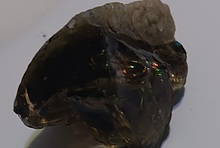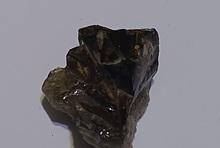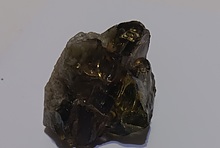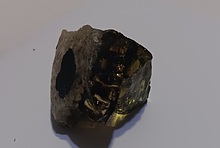Home PageAbout MindatThe Mindat ManualHistory of MindatCopyright StatusWho We AreContact UsAdvertise on Mindat
Donate to MindatCorporate SponsorshipSponsor a PageSponsored PagesMindat AdvertisersAdvertise on Mindat
Learning CenterWhat is a mineral?The most common minerals on earthInformation for EducatorsMindat ArticlesThe ElementsThe Rock H. Currier Digital LibraryGeologic Time
Minerals by PropertiesMinerals by ChemistryAdvanced Locality SearchRandom MineralRandom LocalitySearch by minIDLocalities Near MeSearch ArticlesSearch GlossaryMore Search Options
The Mindat ManualAdd a New PhotoRate PhotosLocality Edit ReportCoordinate Completion ReportAdd Glossary Item
Mining CompaniesStatisticsUsersMineral MuseumsClubs & OrganizationsMineral Shows & EventsThe Mindat DirectoryDevice SettingsThe Mineral Quiz
Photo SearchPhoto GalleriesSearch by ColorNew Photos TodayNew Photos YesterdayMembers' Photo GalleriesPast Photo of the Day GalleryPhotography
╳Discussions
💬 Home🔎 Search📅 LatestGroups
EducationOpen discussion area.Fakes & FraudsOpen discussion area.Field CollectingOpen discussion area.FossilsOpen discussion area.Gems and GemologyOpen discussion area.GeneralOpen discussion area.How to ContributeOpen discussion area.Identity HelpOpen discussion area.Improving Mindat.orgOpen discussion area.LocalitiesOpen discussion area.Lost and Stolen SpecimensOpen discussion area.MarketplaceOpen discussion area.MeteoritesOpen discussion area.Mindat ProductsOpen discussion area.Mineral ExchangesOpen discussion area.Mineral PhotographyOpen discussion area.Mineral ShowsOpen discussion area.Mineralogical ClassificationOpen discussion area.Mineralogy CourseOpen discussion area.MineralsOpen discussion area.Minerals and MuseumsOpen discussion area.PhotosOpen discussion area.Techniques for CollectorsOpen discussion area.The Rock H. Currier Digital LibraryOpen discussion area.UV MineralsOpen discussion area.Recent Images in Discussions
Mineral PhotographyShooting Cannizzarite
8th Dec 2010 22:31 UTCFrank de Wit Manager
The problem was not the small crystals /or the specimen. On the contrary. The specimen is relatively flat and the crystals are nicely grown on the matrix. The problem for me was that the Cannizzarite is silvery black and highly reflective. Ergo: it is not the Cannizzarite's problem. It's my problem ;)
In the beginning all I was getting was completely black feathers instead of nice silvery feathers. So I asked Jean-Marc etc and was adviced to change the light-setup (see attached image). What I did for this picture is the following: I pointed two LED lights that Jean-Marc supplied to me, with diffusors, towards white cardboard. That reflects the light towards a simple plastic coffeecup that I wrapped around the specimen... So the diffused light is pointed indirectly to the specimen and is then again diffused by the white plastic. I cut the bottom out of the coffeecup, and that's where the Luminar is looking at the Cannizzarite ;-)
The rest of the setup is my default setup with Canon DSLR, bellows and Luminar 40mm. Remote controlled vibration-free from my laptop.
Cheers, Frank
By the way: there are still a lot of improvements possible with the picture and with my setup. Matteo, Jean-Marc, Stephan or Fred would be able to make a better picture for sure. I feel a beginner when I look at their superb images... A good picture of this specimen should show more silvery feathers...
9th Dec 2010 14:39 UTCJeff Weissman Expert
9th Dec 2010 15:58 UTCElmar Lackner Expert
nice pic. The double-light-diffusion is the right way for this reflecting beasts :)
10th Dec 2010 09:10 UTCFrank de Wit Manager
Cheers! Frank
10th Dec 2010 14:22 UTCJeff Weissman Expert
10th Dec 2010 14:31 UTCFrank de Wit Manager
I try to fix things, in advance, by changing the light or changing settings in my camera ; but not artificially afterwards.
But I really appreciate your help and thinking with me ; please keep it coming.
Today I have been, and will be, busy photographing some other specimens. Tomorrow, time&family permitting, I will reshoot the Canni.
Alfredo ordered me via email from Japan to be productive ; so I might do some overtime this weekend
Cheers! Frank
10th Dec 2010 15:41 UTCJeff Weissman Expert
10th Dec 2010 20:46 UTCFrank de Wit Manager
superbe..... !

19th Apr 2011 15:23 UTCZbynek Burival Expert
11th May 2011 03:37 UTCRobert Meyer Manager
Thanks for sharing your diffusion technique on this very nice image.
However, I think we fundamentally disagree on the use of Photoshop to correct, not enhance, a digital image. The idea that such corrections are artificial is absolutely true in the sense that all images are artificial representations of real objects. When you refer to silicon, you are perhaps referring to the fact that Photoshop is a computer application. Would it alter your opinion to know that the same latitude in correcting, altering, and enhancing images is available with print images from old style film media? Not only is incredible latitude available with such media, such latitude was commonly made use of by professional photographers or those who printed their own photographs.
One of the difficulties we have is that our hobby, mineralogy, is a science, but photography, the subject of this forum, is an art. We should not try to straddle that fence in thinking that we sully the scientific value of our images by not accepting them as-is from the stacking program. In the digital realm, your camera's firmware is making a myriad of decisions internally without your control on how to present your subject, a mineral specimen. One thing is surely true, while camera manufacturer's do attempt to make their cameras versatile, they did not have the subject of micro mineral photography in mind when they designed the camera. Micro mineral specimens are difficult subjects. Additionally, image stacking alone introduces a level of artificiality to the processed stack that can hardly be compared to even the most egregious traditional correction methods. You are taking a stack of individual images and stitching them together into an artificially flattened composite image, which often suffers from color shift, over averaging, and other odd aberrations of the stacking process.
Additionally, there is the matter of electronic versions of the images, and how they are viewed on a variety of monitors. How do you know that your monitor is color true? While you cannot guarantee that people viewing your images will have calibrated monitors and thus are seeing the same thing you intended them to see, you can indeed calibrate your own monitor and make sure that at least you are seeing the image accurately. How? Well, that is one of the features of Photoshop.
Additionally, what do you do when your finished image differs from what you intended, which is presumably an accurate interpretation of your subject? (Contrast that with a scientifically accurate representation--not really possibly in the realm of the art of photography). Photoshop consists of a group of tools that can help you correct various parameters, such as white balance, overaveraging, and so forth, and then make your image a more accurate interpretation of the subject. With such tools, the numerous yellow-tinted images that one sees as you tour around the Mindat galleries, would actually be more accurate interpretations of their original subjects.
Best regards,
Bob Meyer
11th May 2011 19:33 UTCJeff Weissman Expert
For larger specimens, much of the work should be done outside of the camera – specimen selection and posing, lighting and background, angle of view, control of depth of field for specimen sharpness and background muting, etc. See Michael Bainbridge’s photos for excellent examples of traditional studio photography techniques taken into the digital realm.
For the case of microminerals, I for one would rather have a well defined, detailed in shadows and highlights image of a microcrystal together with its surrounding matrix, rather than blocked-up shadows, blown out highlights, and only a small portion of the entire field of view in focus. So give me image manipulation when this manipulation lets me get the details I want to present.
21st May 2011 05:47 UTCJamey Swisher
So there is NO such thing as an unedited nor pure photo when shooting digitally, period. Only if shooting film, but then you would also need to develop that film by hand because processors in the stores and shops also make corrections and add edit the images on the fly as well. This is why I shoot film as well as digital still and I develop my own negatives, scan them into the computer, and either print them myself on special Archival ink printers or send them out for development to a small handful of professional services that will actually develop the digital images exactly how they are when received with no alterations nor corrections, like WHCC for example.
So there is nothing wrong using photoshop to do what a film shooter would do in a darkroom. The problem arises when someone uses Photoshop, or any other editing program for that matter, to alter an image to make it look better then it does in real life.
Also, when shooting very reflective materials try using a circular polarizer on your lens and turn it to knock down or eliminate the reflections and such, works like a charm.
21st May 2011 09:35 UTCJolyon Ralph Founder
Of course, saving as jpeg would destroy this perfect image anyway - you would have to save as a lossless format such as PNG24.
When you print your image it is converted from RGB to CMYK, for which conversions are not exact due to big differences between transmitted and reflected colours.
So, I would say not to worry about it. Let your camera process images, use photoshop if you need to, and upload them as jpeg. There is no such thing as a 'perfect image' and the end result (being interpreted by the human brain) is a complex analogue process anyway which differs from person to person.
If you are worrying too much about this it might take away the fun and enjoyment of photographing minerals - we can all learn tricks and skills to improve our photography, but don't try to look for some theoretical perfect level, it's not possible, and mostly irrelevant anyway.
Jolyon
30th May 2011 05:05 UTCJamey Swisher
Shooting in RAW does NOT always mean unaltered data! Many cameras still apply the camera defaults to the RAW files when it is opened in an image editing program like Photoshop, but all the unaltered data is there in the file you just have to go through and manually set everything single setting to zero/neutral. If you do not change the settings your image will and is altered. Also many image editing programs process a RAW image file during conversion with a preset set of editing parameters which in turn edits the image as well unless you zero/neutral them all out. And even then the RAW conversion software still has a specific set of algorithms it uses to convert the RAW files into a usable image there fore editing the image from its original state. The only way to have a truly unedited digital image is to shoot with the likes of a FoveonX3 sensor and then only view the RAW files in a viewer and not convert them to any other format, which would be the same as essentially viewing the developed negatives of a film camera. But even then you would need to use a software that applies NO default parameters to the image like most do. I believe Sigma Photo Pro has a setting for as shot in the pure RAW data and DCRAW also has switches that can be used to cause no parameters applied. But once converted from the RAW format things have become edited.
I am not meaning to doom digital or make folks think digital is doomed, that is placing words in my mouth/fingers, lol. I shoot digital and film both, but mainly digital now. What I am stating is just that folks expecting unedited images from digital are never going to get that. Those constantly downing anyone for editing an image, etc. In order to publish a pic on the net or have it printed the image is edited somewhere along the lines, period. Even most websites use GD, or another image handling software on the server side to handle uploaded images in in most cases this software even applies its own set of parameters and edits on the fly and/or during upload. Resize an image and it has now become edited. There is NO way around it, sorry. Even film photographers edit images folks, Ansel Adams spent hours upon hours in the darkroom doing everything from masking, to contrast enhancement, to sharpening, etc.
As for accurate colors coming from any non-specialized sensor cameras, you hit it correctly... "good representation", good being the key word here, not perfect nor identical, not totally accurate though as it is physically impossible due to the technical limitations of standard Bayer based sensors, many can get close, but none are technically accurate, just close or good representations. Even the court systems for the longest time denied the use of digital images as evidence due to the editing done, only film was allowed. Now, they have realized things are edited and the World has went digital, so they deal with and allow minor editing as that which is done in camera or in the conversion software with its programmed defaults. They just have modules that hook up to the digital cameras that prevent anything else and certify the image as actual with no major editing done and nothing critical changed.
I just get so sick of folks saying how they shoot without editing and slamming anyone who does edit anything, when they are still editing, just letting their camera's do the editing instead of by hand. But an apple is still an apple.
There is NOTHING wrong with editing an image if you stick to traditional methods. The problems arise when you start artificially enhancing the subject, not just because you do a simple edit. Any good and true professional photographer will tell you that editing is part of the workflow in digital imagery.
Images shot from digital cameras, especially Bayer based, and especially if resizing them, need a few things tweaked/edited. The Bayer based sensor works by using an AA(anti-aliasing) filter over the sensor, which essentially, to keep it simple, blurs the data to rid the moire pattern caused by the way the Bayer based sensor captures an image. The only exception to this that I am aware of are the Leica M series digitals which instead use a specially designed software algorithm built into the firmware of the camera to eliminate this moire pattern instead of using the image degrading AA filter. Another benefit of the Foveon, it needs no AA filter nor any algorithms as it does not suffer from the moire issues and on a pixel level is therefore far sharper then a Bayer sensor based image, which is why, especially when resizing, one really needs to apply a slight type of sharpening and local contrast enhancement to an image to recover what is lost due to hardware limitations or software limitations in the case of resizing to larger or smaller image sizes.
It just is not as cut and dry as many of you want to think, or maybe just wish to think, it is. At this point in time you could not even get an unedited film image unless you develop it yourself and just view the negatives. Otherwise the machine developers and printers do enhance and correct the images. They are devloped and printed on the same machines the digital ones are done on. ;)




Mindat.org is an outreach project of the Hudson Institute of Mineralogy, a 501(c)(3) not-for-profit organization.
Copyright © mindat.org and the Hudson Institute of Mineralogy 1993-2024, except where stated. Most political location boundaries are © OpenStreetMap contributors. Mindat.org relies on the contributions of thousands of members and supporters. Founded in 2000 by Jolyon Ralph.
Privacy Policy - Terms & Conditions - Contact Us / DMCA issues - Report a bug/vulnerability Current server date and time: April 19, 2024 04:15:11
Copyright © mindat.org and the Hudson Institute of Mineralogy 1993-2024, except where stated. Most political location boundaries are © OpenStreetMap contributors. Mindat.org relies on the contributions of thousands of members and supporters. Founded in 2000 by Jolyon Ralph.
Privacy Policy - Terms & Conditions - Contact Us / DMCA issues - Report a bug/vulnerability Current server date and time: April 19, 2024 04:15:11











